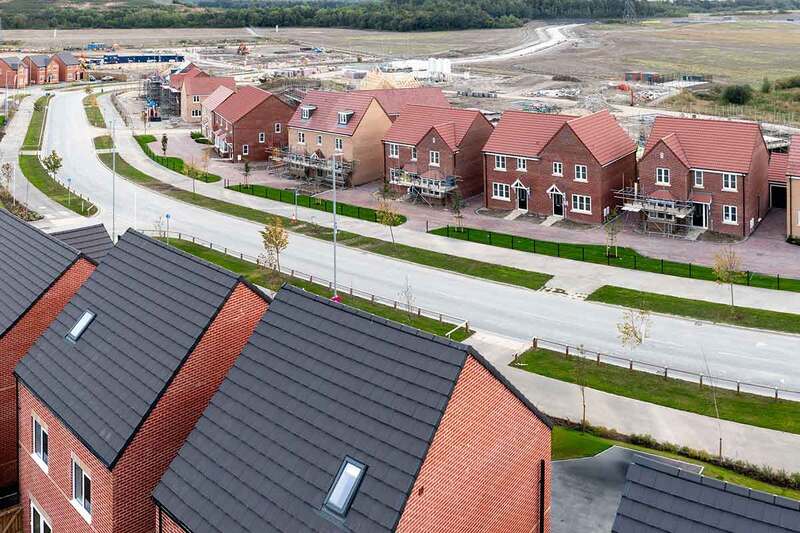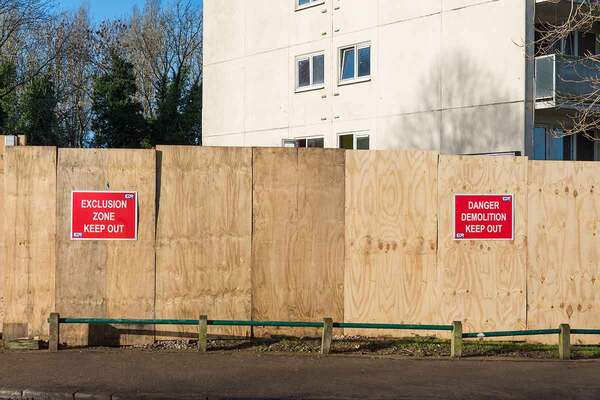Savills finds 187,000 new affordable homes needed each year
Savills has estimated that 187,000 new affordable homes are needed each year in England after finding an annual affordable housing shortfall of 128,000 homes.

Savills’ report, Spotlight: Beyond a one size fits all housing policy, found that the number of affordable homes that need to be delivered in England each year has increased from 70,000 in 2015 to 187,000 in 2024.
The report said there is an annual affordable housing shortfall of 128,000 homes at present and this seems set to grow as “mounting pressures on housing providers start to bite”.
Savills said that a “significant step up in delivery” is needed and that more social rented homes are required everywhere.
Savills said that policymakers should ensure these are provided alongside other affordable tenures, such as intermediate rent or affordable homeownership options, and said that future housing policy should recognise regional variations in housing need.
The research highlighted the shortfall of affordable housebuilding across England and found the greatest gap in the South, where an additional 62,600 affordable homes are needed each year to meet affordable housing demand.
The report called for policy measures that can help address the country’s shortfall in affordable housing.
According to the report, this includes restoring financial capacity to housing providers through a long-term rent settlement, clear direction for planning policy, and devolution of funding and decision-making to local authorities and regional mayors.
Steve Partridge, head of Savills’ Affordable Housing Consultancy, said: “Unmet affordable housing needs are enormous, and they vary between and within regions.
“Future housing policy should be sufficiently flexible to recognise regional variations with grant funding directed towards supporting new homes that will have the biggest impact on people’s housing challenges.
“Affordable homes of all tenures are required if we are to build the homes people need and solve the housing crisis. This is important to consider as the government creates a new housing strategy for England from spring 2025.”
Restoring financial capacity
Savills said that confirmation of a long-term rent settlement would provide housing associations with “greater certainty” around future rental income.
In the Budget on 30 October, the government launched a consultation on a new rent settlement for the sector on the basis of the Consumer Price Index (CPI) plus one per cent, which it expects to remain in place for “at least” five years.
Savills said a recent analysis by the firm found that there is both the need and the capacity to increase general needs rents at CPI plus one per cent over the next 10 years, while maintaining a discount to private rents.
The report said that a new Affordable Homes Programme (AHP) from 2026 would also support “the rebuilding of financial capacity”.
The Autumn Statement also confirmed a £500m top-up to the existing AHP running from 2021 to 2026, with the government saying that details of the new investment to succeed this programme would be set out at the Spending Review in spring next year.
Savills also called for expanded grant funding to support new housebuilding and improvements to existing homes.
Diversifying the tenure offering
The report said that more affordable housing is needed in all areas of England but “a key part of the policy solution” is diversifying this supply and the tenure offering across different markets.
Local markets are diverse, so matching housing need to supply will produce the best outcomes for households, Savills said.
The report added: “Our research highlights that in London and much of the South, housing need is best met by prioritising social rented homes as the biggest discount to market pricing is required in these areas.
“Other tenures will still have a role to play alongside social rented supply, particularly when supporting scheme viability.”
Planning policy and devolution
The report said that planning policy and guidance look likely to continue to emphasise the need for social rent over other tenures.
“Without considerable uplift in grant, it will be very challenging to deliver as many or more affordable homes if the proportion of delivery as social rent continues to increase,” it said.
Savills said that planning authorities and mayoral authorities should have greater power to decide whether affordable homes should be offered for rent or for ownership, and at what level of discount.
The report added that, as the need for sub-market housing varies between and within regions, future housing policy should recognise this variation. It added that grant funding should be directed towards supporting new homes that would have the biggest impact on people’s housing challenges.
“This is likely to require greater co-ordination between districts, within regions or mayoral areas to ensure homes are delivered in the right places,” Savills said.
“Future grant programmes will need flexibility to deliver the most appropriate affordable housing in each area. Our research shows that more social rented homes are needed everywhere alongside other affordable tenures, such as intermediate rent or affordable homeownership options.
“Grant funding is likely to be constrained over the coming years. Delivering a range of affordable housing tenures, matched to the requirements of local areas, would therefore maximise value for money and have the greatest impact on people’s lives.”
RELATED







